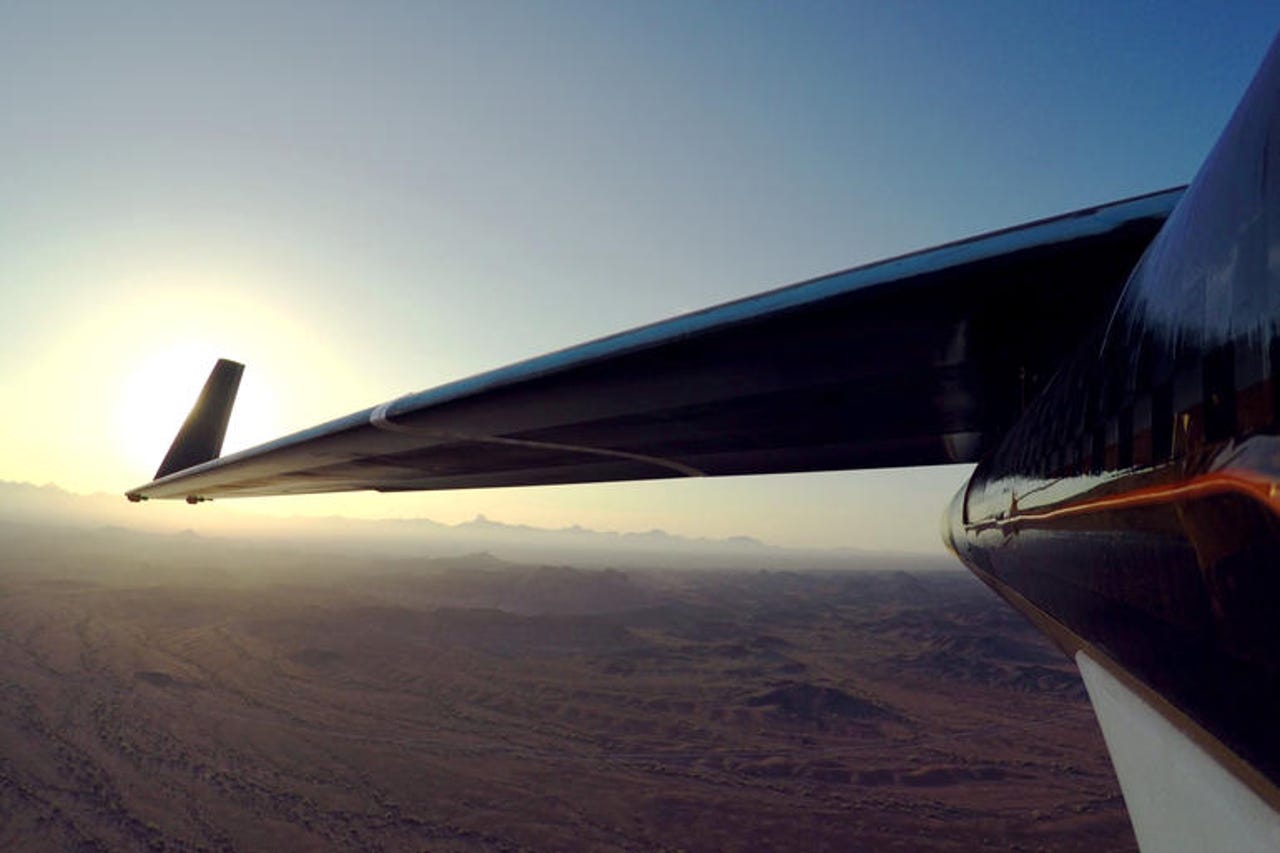Facebook's internet drone flies again - and lands with only a few dings this time


Facebooks's Aquila drone on an earlier flight.
Facebook has revealed its second test flight and landing of its huge internet-beaming drone was a success.
The second test of Acquila, a solar-power aircraft with a wingspan of a Boeing 737, marks an important milestone for Facebook's ambition to deliver internet to under-served parts of the world.
Facebook details in a blogpost aspects of the 1 hour and 46 minute flight, which took place on May 22 in Arizona, as well as modifications since the first flight, which experienced a "structural failure" just before landing.
Facebook in December noted that a problem the National Transport Safety Board identified in its review was that Aquila lacked sufficient drag to compensate for a gust of wind that disrupted the first landing. Aquila now has additional "spoilers", or moveable surfaces on the wing, that boost drag and counter lift during landing.
The aircraft has also gained hundreds of new sensors, tweaked autopilot software, new communication subsystem radios, and a new smoother finish. It now also has a mechanism to rotate the propellors horizontally at landing to account for the plane's lack of a landing gear. Aquila instead lands on Kevlar pads that skid on a fine gravel patch Facebook prepared.
The horizontal mechanism didn't work perfectly though. As Facebook shows in a short video, all the motors stopped as planned but only one propeller locked horizontally. However, the landing was still "absolutely perfect" and came to a halt in about 10 meters with only a few "minor, easily repairable dings", according to Facebook.
The plane is designed to move slowly in order for it to provide internet access to an area. Its speed at launch was 27 mph and as it flies upwind only travels with a groundspeed of 10-15 mph. It's also designed to fly for 60 to 90 days per flight relying on solar-power for energy. Facebook notes it runs on power equivalent to three blow dryers.
Facebook doesn't reveal the top altitude it made in this flight, save that it exceeding 3,000 feet. The aircraft is designed to fly at between 60,000 and 90,000 feet to avoid commercial air traffic.
"This second flight was all about data," said Facebook's Martin Luis Gomez. "We flew lengthy test points at constant speed, heading, and altitude to measure the airplane's drag. The data from these "trim shots," as they're called, will be used to refine our aerodynamic models, which help us predict the energy usage and thus optimize for battery and solar array size."